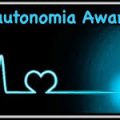Table of Contents
Postural orthostatic tachycardia syndrome (POTS) is a condition characterized by symptoms that occur; when the patient stands up from a lying position. At rest, the person experiences dizziness or fainting and excessive heart rate. Scientists do not fully understand what causes POTS, and treatments vary in effectiveness.
Main Symptoms
When a person goes from horizontal to vertical position, gravity causes blood to move quickly down to the lower body; and the heart has to compensate for this sudden change to maintain blood pressure and supply the brain oxygen. One of postural orthostatic tachycardia main symptoms of the syndrome is orthostatic intolerance; in which the body is unable to adequately adapt to this change and the blood returns to the upper body at a rate far below what it should. Consequently, blood flow to the brain is reduced, and a person with POTS syndrome may feel dizzy; experience blurred vision or points of view, or discomfort when standing.
In addition, a person with postural orthostatic tachycardia syndrome undergoes a rate increase of 30 or more beats per minute than normal or persistent heart rate over 120 beats per minute for 10 minutes or more after standing heart. These results force the heart to try and compensate for the low blood supply to the brain. The feeling of a racing heart may be accompanied by sweating and feelings of anxiety.
POTS in Women
Postural orthostatic tachycardia syndrome occurs most often in women, although men can also suffer from POTS syndrome. In some cases, postural orthostatic tachycardia syndrome is triggered by an event such as surgery, pregnancy, physical trauma, illness; or the menstrual period. It can also occur independently of other conditions.
Some factors that greatly increase the frequency of episodes POTS are dehydration, alcohol; sitting or standing for long periods of time, extreme heat and medication. Increased salt intake and maintain adequate hydration can increase blood pressure and reduce the symptoms associated with orthostatic intolerance. Compression garments such as flexible support can reduce the amount of blood flowing in the legs; and reduce demands on the heart resulting from standing.
POTS Syndrome
Postural orthostatic tachycardia syndrome can affect the ability of a person to operate. It can affect everything in a person’s life, from work to play in family life. However, most people who suffer from POTS see a gradual improvement in their symptoms over time if they make dietary and behavioral changes.
While standing, the blood moves sharply down and the heart has to compensate.
Postural orthostatic tachycardia syndrome (POTS) can trigger blurred vision and other eye disorders.
Compression socks can help reduce the amount of blood circulating in the legs when a person gets up to relieve pressure on the heart.
Postural orthostatic tachycardia syndrome occurs most often in women.
The term “POTS” was first used in 1993 by a team of researchers from Mayo Clinic, led by neurologist Dr. Philip Low.8 However, POTS is not a new illness; it has been known by other names throughout history, such as DaCosta’s Syndrome, Soldier’s Heart, Mitral Valve Prolapse Syndrome, Neurocirculatory Asthenia, Chronic Orthostatic Intolerance, Orthostatic Tachycardia; and Postural Tachycardia Syndrome. In the past, it was mistakenly believed to be caused by anxiety. However, modern researchers have determined what is POTS – it’s not caused by anxiety.






 I love to write medical education books. My books are written for everyone in an easy to read and understandable style.
I love to write medical education books. My books are written for everyone in an easy to read and understandable style.